The Kalanchoe plant is a member of the Fat family. This genus unites more than 200 different species, while it is represented by shrubs, succulents and herbaceous perennials. In nature, this plant can be found in the tropical regions of Asia, Australia and America. Foliage may vary from species to species. As a rule, the leaves are thick, they are sessile or have petioles, and they can also be weakly or strongly dissected. During flowering, an umbrella is formed, which includes flowers of white, purple, red or yellow color. At home, almost all types of this plant grow well, unless of course the florist adheres to the rules of caring for the crop.
Content
- 1 Brief description of cultivation
- 2 Kalanchoe care at home
- 3 Reproduction methods
- 4 The healing properties of Kalanchoe
- 5 Diseases and pests of Kalanchoe
- 6 Types of Kalanchoe with photos and names
- 6.1 Kalanchoe bentii
- 6.2 Kalanchoe Beharskoe (Kalanchoe beharensis)
- 6.3 Kalanchoe Blossfeld (Kalanchoe blossfeldiana)
- 6.4 Kalanchoe felt (Kalanchoe tomentosa)
- 6.5 Kalanchoe daigremontiana
- 6.6 Kalanchoe grandiflora (Kalanchoe grandiflora)
- 6.7 Kalanchoe manginii (Kalanchoe manginii)
- 6.8 Kalanchoe paniculata (Kalanchoe thyrsiflora)
- 6.9 Kalanchoe marble (Kalanchoe marmorata)
- 6.10 Kalanchoe pinnata (Kalanchoe pinnata)
- 6.11 Flaming Kalanchoe (Kalanchoe flammea)
- 6.12 Kalanchoe tubular (Kalanchoe tubiflora)
- 6.13 Kalanchoe dissected (Kalanchoe laciniata), or lobular Kalanchoe
Brief description of cultivation
- Bloom... It starts in the last winter weeks and lasts approximately 30 days.
- Illumination... Needs bright, but diffused light, the duration of daylight hours is about 12 hours.
- Temperature regime... In winter - 14-18 degrees, and in summer - 18-28 degrees. Make sure that the temperature in the room where the flower is located is not less than 10 degrees.
- Watering... Bottom watering is recommended. During the growing season, it should be moderate and carried out immediately after the top layer of the potted substrate has dried. In winter, it is necessary to water the flower only after the soil mixture dries out to 1/3 of the depth.
- Air humidity... It grows well with air humidity typical for living rooms. However, on hot days, it is recommended to systematically moisten the flower from a sprayer with lukewarm water.
- Fertilizer... In the summer and autumn (during the formation of buds), it is necessary to feed the bush once a week, for this, fertilizer is used for succulent plants and cacti. You can feed the Kalanchoe with organics no more than 1 time in 2 weeks.
- Pruning... When the bush fades, all flower stalks are removed.
- Dormant period... Begins immediately after flowering ends and lasts approximately 30–45 days.
- Transfer... This procedure is carried out only when necessary when the root system becomes too crowded in the pot. The flower is transplanted at the beginning of the growing season.
- Soil mixture... For growing crops, you can use a ready-made soil mixture designed for cacti and succulent plants. A substrate consisting of leafy and turfy soil, sand and peat (2: 4: 1: 1) is also suitable.
- Reproduction... By cuttings and seed method.
- Harmful insects... Mealybugs, scale insects, spider mites, aphids.
- Diseases... Powdery mildew, late blight, gray rot, stem rot, annular leaf spot.
- Properties... Such a plant is medicinal. It is distinguished by its antimicrobial, hemostatic, anti-inflammatory, wound healing and disinfecting properties.
Kalanchoe care at home
Illumination
When cultivated in indoor conditions, the optimal length of daylight for Kalanchoe is about 12 hours. In this regard, in the warm season for its cultivation, it is recommended to choose window sills of western or eastern orientation. In winter, it is recommended to rearrange the bush to the south window. If in the cold season the daylight hours are not long enough, then the flower will need to be illuminated, for this additional artificial lighting is used.
Temperature regime
Kalanchoe can grow well at almost any air temperature. But you should not go to extremes! In summer, temperatures can vary from 18 to 28 degrees, and in winter - from 14 to 18 degrees. If the temperature in the room drops to 10 degrees (and below), then the plant can get sick and die. During cold wintering (14-18 degrees) flower buds are laid.
Watering
For watering, use warm, soft and well-settled water. Watering is carried out after the top layer of the soil mixture dries out, but make sure that the earthen coma does not dry out, as this provokes massive flying around the foliage. In winter, watering is carried out after three or four days have passed after the soil mixture has dried. Experts advise to water the flower through the pallet.
Spraying
The crop does not need spraying, because it grows well with air humidity normal for living rooms. However, it responds well to humidification from a spray bottle on hot days. But if you do not spray it in the heat, then nothing bad will happen. The leaf plates of such a plant are fleshy, sometimes there is pubescence on their surface, so the moisture evaporates very slowly.
Fertilizer
It is necessary to feed the bush only in the summer, and even in the autumn, when its buds are forming. To do this, you can use special fertilizers for cacti. In summer, Kalanchoe is fed with organic matter twice a month, and with mineral fertilizers - once every 7 days.
Pruning
Since most of the Kalanchoe species discard old leaf plates, such shoots can, if desired, be cut off and planted in the same or in an individual container. And in other species, the stems may fall over the edge of the planting container, in this case you can also cut them off and plant next to them, but you can not touch them.
Bloom
In order for the Kalanchoe to please you with lush flowering, the duration of daylight hours in spring and summer should be no more than 10–12 hours. However, the lighting must be very bright. In some species, flowers can be cut off and placed in a vase of water, where they can stand for a relatively long time. After flowering is over, some of the shoots can be cut to form a neat bush. If necessary, the cut stems can be rooted.


Watch this video on YouTube
Kalanchoe transplant
Kalanchoe is transplanted only when it grows strongly and it becomes cramped in the pot. At the bottom of the planting tank, a good drainage layer must be made from small pieces of brick or expanded clay. This will avoid stagnant water in the substrate. For transplanting young bushes, a soil mixture is suitable, which includes peat, sand, deciduous and sod soil in a ratio of 1: 1: 2: 4. If you want, you can buy ready-made succulent substrate in the store. When transplanting an epiphytic Kalanchoe into the soil mixture, it is recommended to pour a small amount of humus.
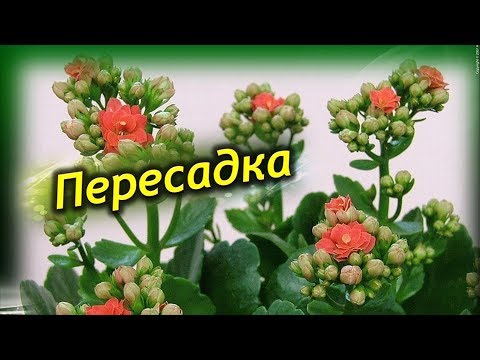

Watch this video on YouTube
Reproduction methods
Reproduction of Kalanchoe by cuttings
As a cutting, you can use both a leaf plate and a piece of shoot. It is very easy to root them. For example, in the first summer weeks, tear off a leaf from the parent bush and plant it in a fertile soil mixture. Then it is covered with a jar and periodically moistened with a sprayer. After a little time, roots form on the leaf.


Watch this video on YouTube
Growing from seeds
Also, the culture is quite simple to propagate by seed. They are sown in the last winter or first spring weeks. To do this, take a container, which is filled with deciduous soil. Then, on its surface, it is necessary to evenly distribute the seeds, which are then pressed into the substrate with a finger, and you do not need to fill them with soil mixture on top. The container must be covered with glass and a paper sheet; crops need regular ventilation in the morning and evening. They need to ensure the correct temperature regime from 16 to 20 degrees, as well as timely watering with lukewarm water, while making sure that it does not completely dry out. After the shoots appear, the shelter must be removed from the container. When they are 20-30 days old, they should be unpacked into a larger container. Once again, the plant is transplanted after they have formed the third or fourth true leaf plate. Do not forget to make a good drainage layer at the bottom of the pots, and a substrate consisting of turf soil, peat and sand (2: 4: 1) is used for planting seedlings. After the transplanted seedlings take root well, they should pinch the top, thanks to this the bush will be more lush and branched. The next transplant is carried out only after the plant becomes cramped in the pot. This time, a soil mixture is used, which includes humus, compost, sand and deciduous soil. The first time a young bush will bloom the next year.
The healing properties of Kalanchoe
In Kalanchoe pinnate juice has an anti-inflammatory effect, it is used in dentistry and gynecology. This juice also helps burns, ulcers and frostbite heal faster. It is also used during the treatment of tonsillitis and stomatitis. In folk medicine, Kalanchoe is also used very widely.
Diseases and pests of Kalanchoe
If Kalanchoe, which is in a cool place, is watered excessively, then mold can form on it. Powdery mildew can also affect the bush if it is in a very warm place and is watered too abundantly. In some species, shoots can stretch and bare, but there is no need to worry, because this process is natural for such a culture.


Watch this video on YouTube
Types of Kalanchoe with photos and names
Kalanchoe bentii
The homeland of this species is the Arabian Peninsula. Its representatives are powerful semi-shrubs, the height of which is about 100 cm. Thick leaf plates reach about 50 cm in length, they grow in 6 pairs and have a rounded shape. During flowering, an umbrella-shaped inflorescence is formed, consisting of white flowers.Flowering is observed in the second half of the spring. This species grows very well in a cool place.
Kalanchoe Beharskoe (Kalanchoe beharensis)
In nature, the species is found in the southern part of Madagascar, its representatives are shrubs. In bushes, the lower parts of the stems become bare over time. The surface of the leaf plates is covered with hairs, and their edge can be slightly serrated or solid. There is also pubescence on the surface of the flowers, their length is slightly less than 1 centimeter.
Kalanchoe Blossfeld (Kalanchoe blossfeldiana)
Originally view from the island of Madagascar. Its representatives are low, erect shrubs, the height of which is about 0.3 m. The shape of green bare leaf plates with a red edge is ovoid, their width is about 40 mm, and their length is up to 70 mm. Umbrellas are composed of erect red flowers. Thanks to breeders, forms were born, the flowers of which are painted in yellow, pink, orange, white and other colors.
Kalanchoe felt (Kalanchoe tomentosa)
The homeland of such a plant is Madagascar, its representatives are semi-shrubs. There is pubescence on the surface of erect stems. The shape of the entire sessile leaf plates is elongated-ovoid, their width is about 15 mm, and their length is up to 60 mm. Umbrellas are made up of small flowers.
Kalanchoe daigremontiana
In nature, the species is found in Madagascar. The height of such a herbaceous perennial plant is about 50 cm. The foliage is variegated from top to bottom. The upper part of the leaf plate has a greenish-gray color, its shape is elongated-elliptical, it is naked about 10 centimeters long with an uneven edge. On the surface of the foliage, there are many spots of purple color. During flowering, a panicle inflorescence is formed. The length of the corolla tube of the flower is about 15 mm, and the length of the rose petals is up to 5 mm. The species blooms in the winter.
Kalanchoe grandiflora (Kalanchoe grandiflora)
Or marble Kalanchoe (Kalanchoe marmorata). The native land of the species is India, it is represented by dwarf shrubs, which can reach a height of slightly more than 50 cm. The large-toothed short-peaked green leaf plates can eventually turn pale red if direct sunlight hits the bush. During flowering, umbrellas are formed, consisting of yellowish flowers with a pleasant smell. Blooming is observed in May.
Kalanchoe manginii (Kalanchoe manginii)
Such an ampelous appearance has a lot of similarities with Blossfeld's Kalanchoe. However, its flowers are larger, and they are not erect, but hanging. Flowering is usually observed in the spring.
Kalanchoe paniculata (Kalanchoe thyrsiflora)
The height of such a herbaceous perennial plant is about 0.6 m. The shape of the silvery-white leaf plates is ovoid, they taper towards the base, their width is about 70 mm, and their length is up to 15 centimeters. At the base of the bush, the foliage grows very densely, the closer to the top, the less frequent and smaller the leaf plates. Flowering is observed in the last spring weeks, the length of the yellow flowers is about 15 mm, the petals reach 5 mm in diameter. At the end of flowering, children are formed, with which the species can be very easily propagated.
Kalanchoe marble (Kalanchoe marmorata)
Either large-flowered Kalanchoe (Kalanchoe grandiflora), or Somali Kalanchoe (Kalanchoe somaliensis). The view can be found in the mountains of Ethiopia. It is represented by semi-shrubs, reaching a height of about 50 cm. The green foliage eventually changes its color to gray, on its surface there are specks of brown or lilac color. The leaf plates are ovoid, they taper towards the base, there are notches on the edge. Umbrellas consist of white flowers. The corolla tube is about 80 mm long; the petals are in the shape of an elongated egg.
Kalanchoe pinnata (Kalanchoe pinnata)
This view comes from Madagascar. This herbaceous perennial plant reaches a height of about 100 cm. The lower leaf plates are simple, as a rule, have a heart-shaped base and ovoid, and the other leaves are pinnate, consisting of 3-5 leaflets. All leaves are green. The corolla tube is greenish-white, while the petals are pale red.
Flaming Kalanchoe (Kalanchoe flammea)
Or glaucous Kalanchoe (Kalanchoe glaucescens). Originally view from Somalia. The height of such a herbaceous perennial plant is about 0.4 m.Ovate leaf plates taper towards the base, and at the top they have a widely rounded shape, their length is about 80 mm, and their width is up to 30 mm, the edge is serrated. Umbrellas consist of deep red or bright orange flowers. The corolla tube is slightly widened; the petals reach 20 mm in diameter.
Kalanchoe tubular (Kalanchoe tubiflora)
In nature, the species can be found in Madagascar. It is represented by tall herbaceous perennial plants or shrubs, which are about 0.7 m high. The narrow grayish-green leaf plates are about 12 centimeters long, and there are many brown spots on their surface. The length of the red tube of the corolla is about 25 mm.
Kalanchoe dissected (Kalanchoe laciniata), or lobular Kalanchoe
It is a herbaceous perennial plant native to Africa. Over time, the fleshy stems become bare and lean towards the soil surface. The greenish, fleshy and dense leaf plates are covered with a waxy coating, they are strongly dissected, and their edge is serrated. The tubular flowers are orange-yellow in color.


Watch this video on YouTube



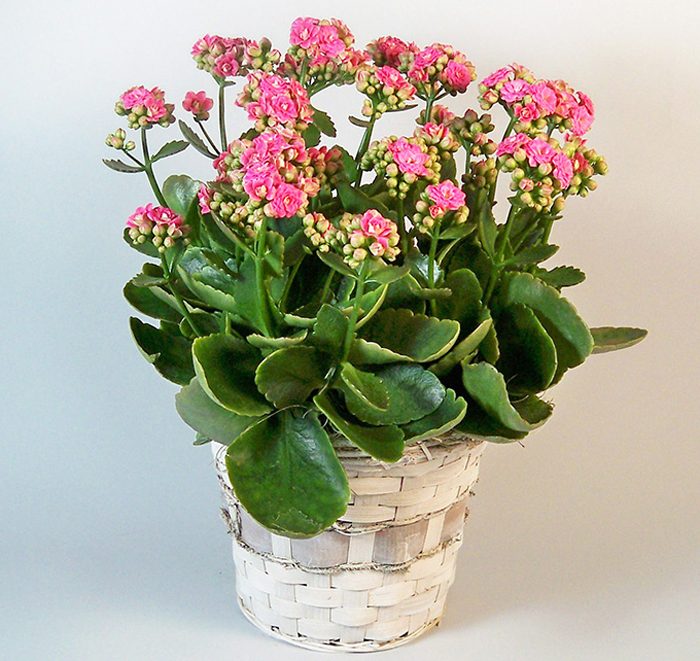
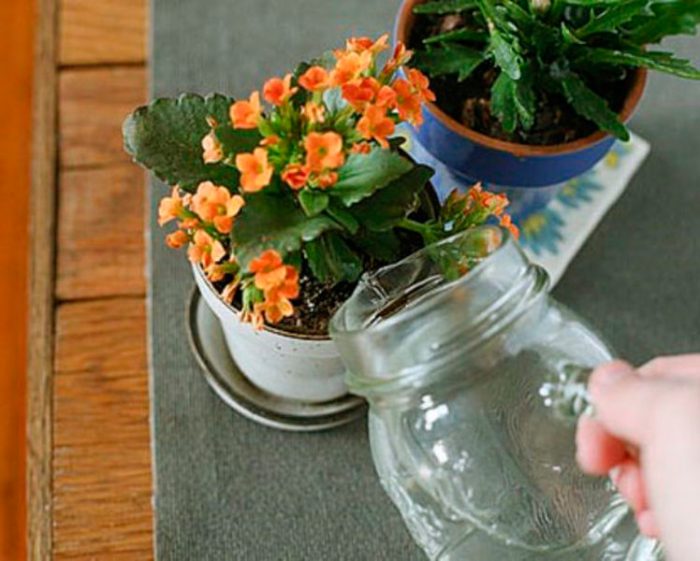
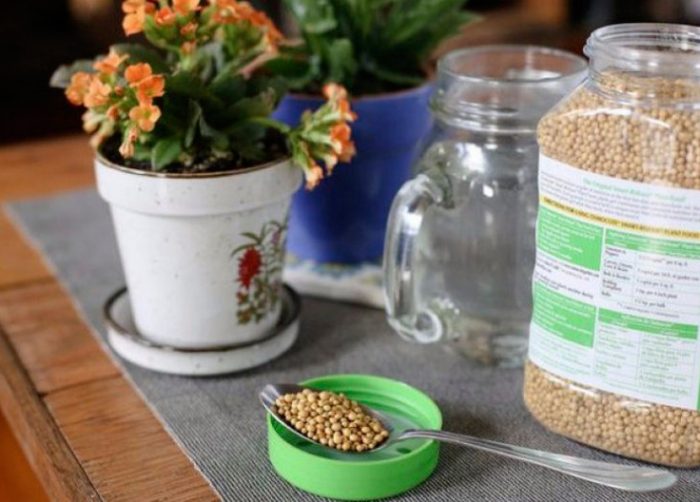
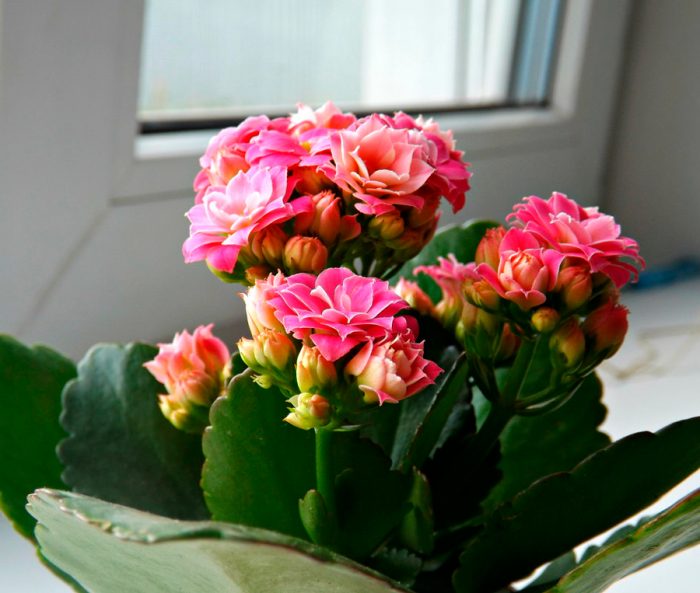

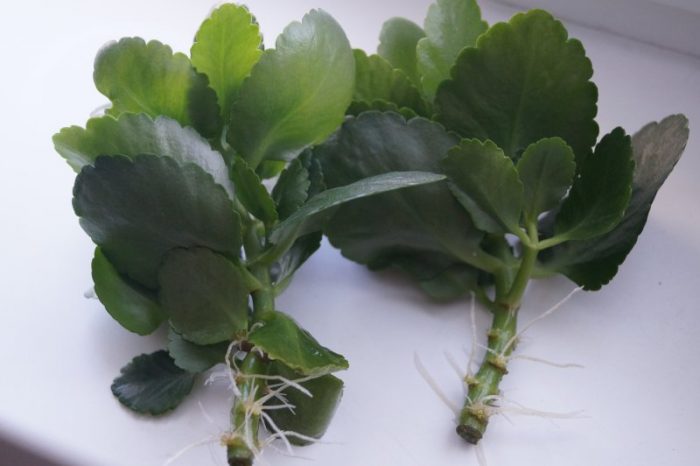
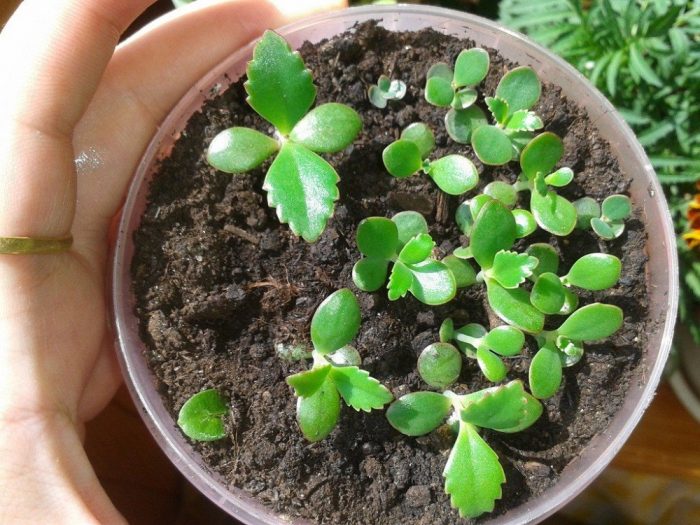
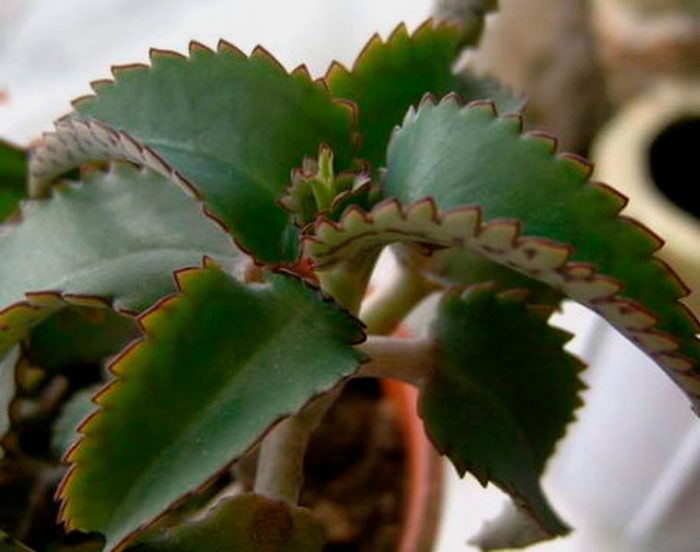
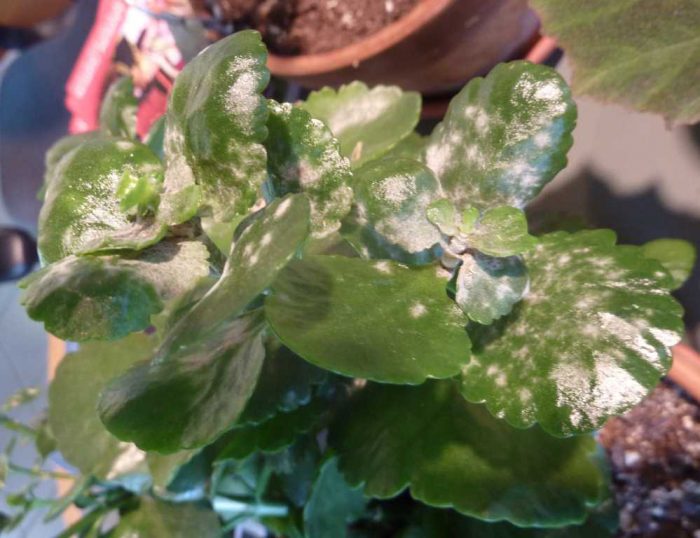
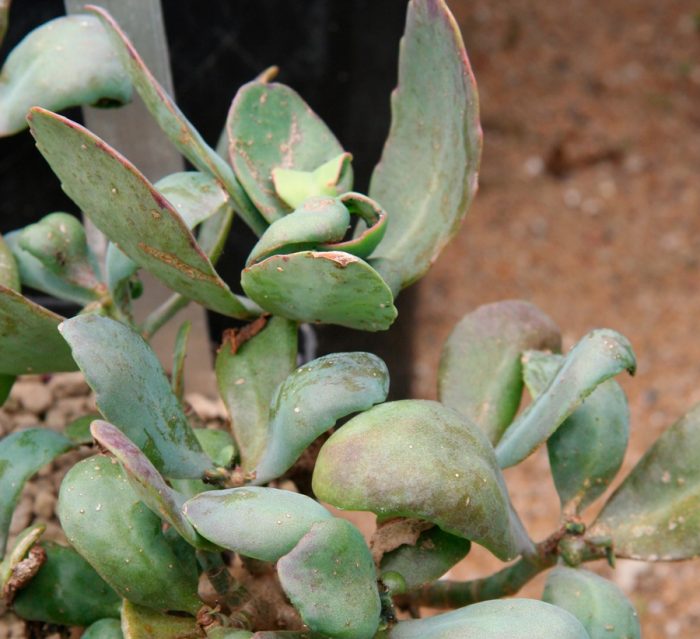
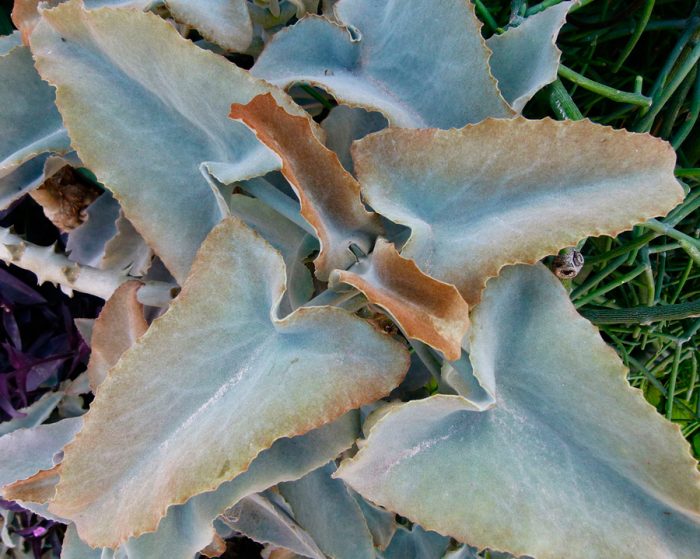
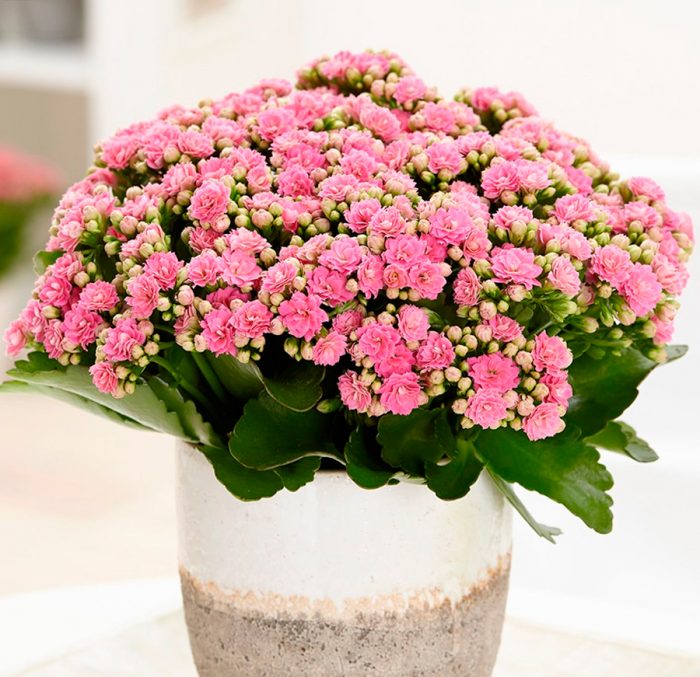
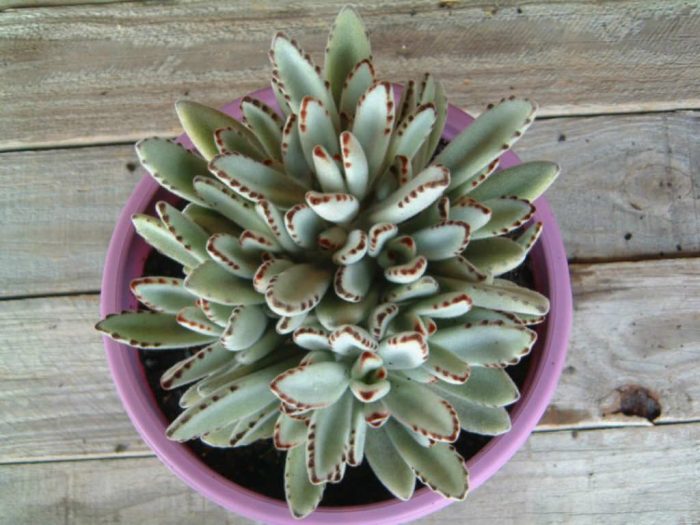
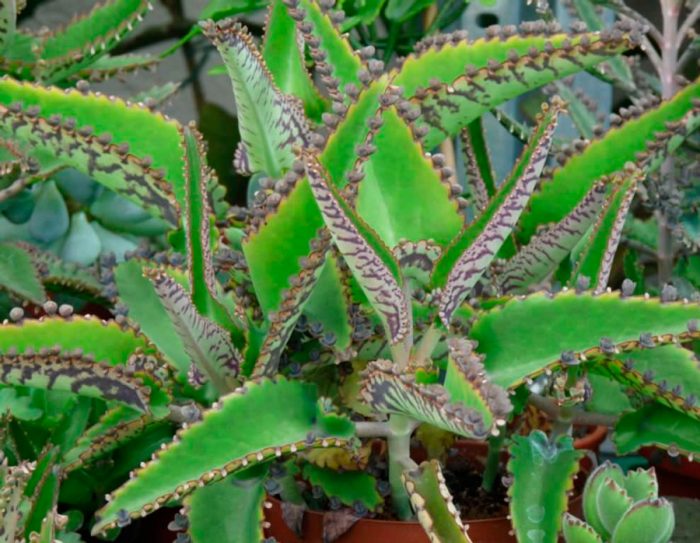
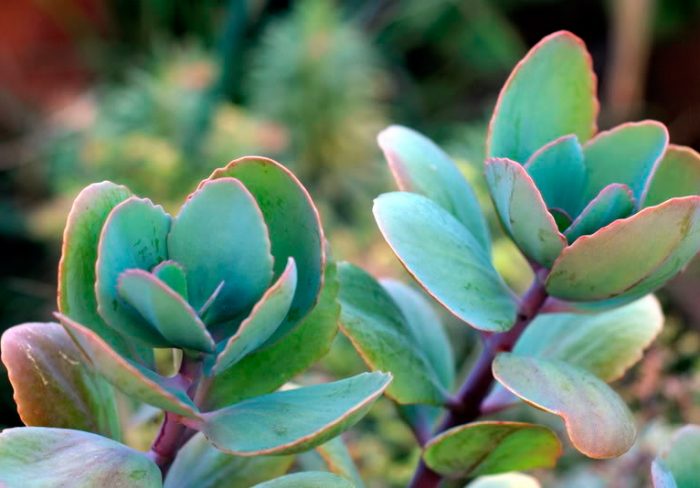
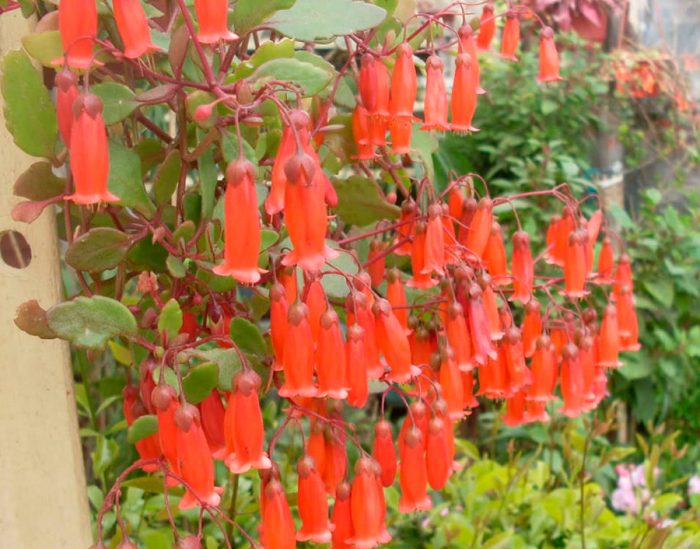
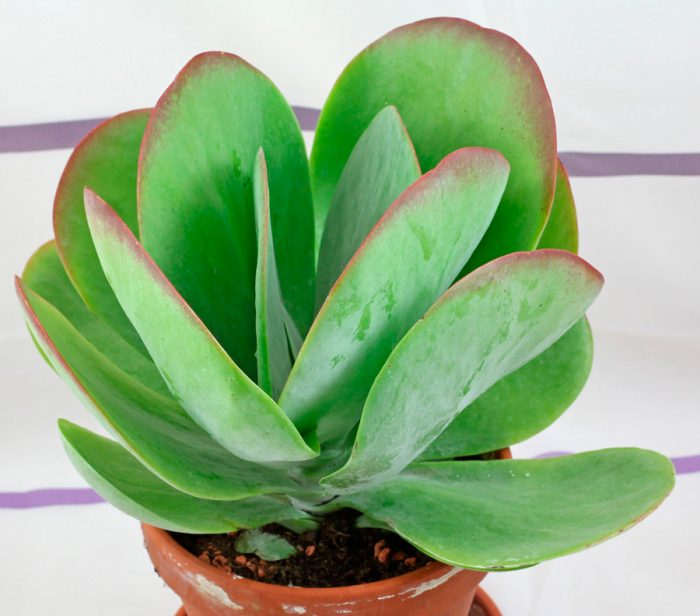

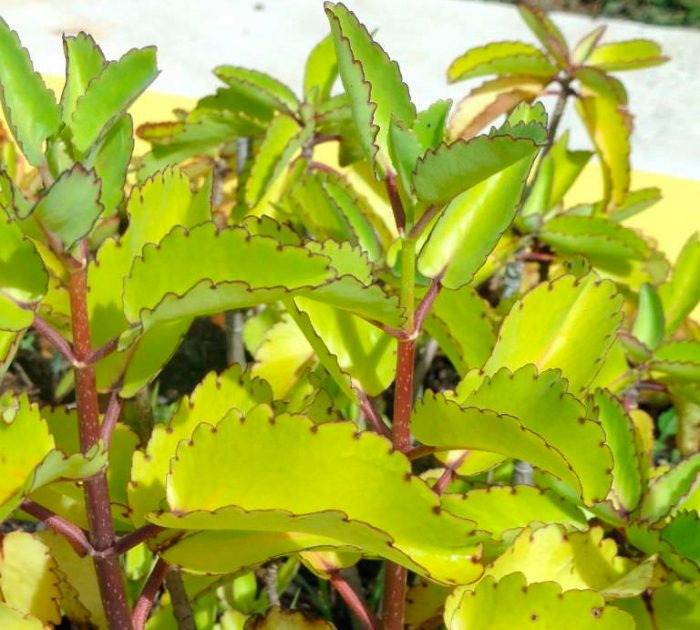
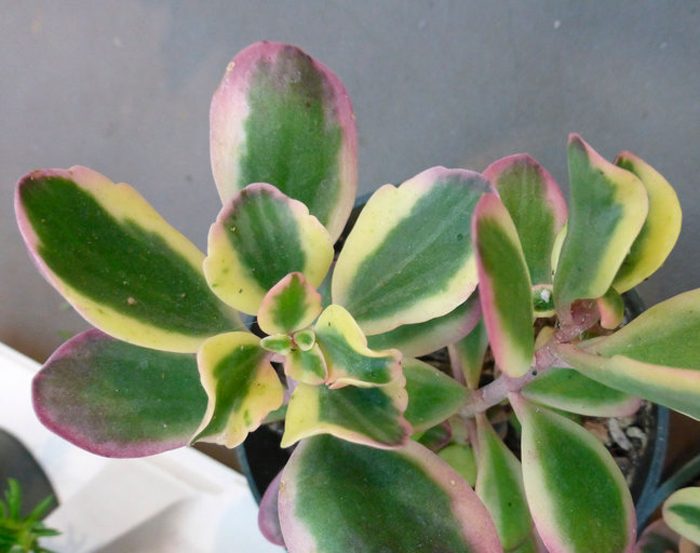
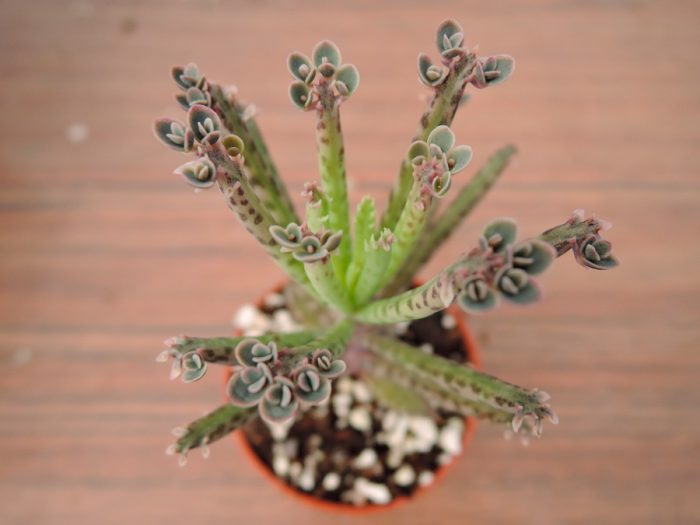
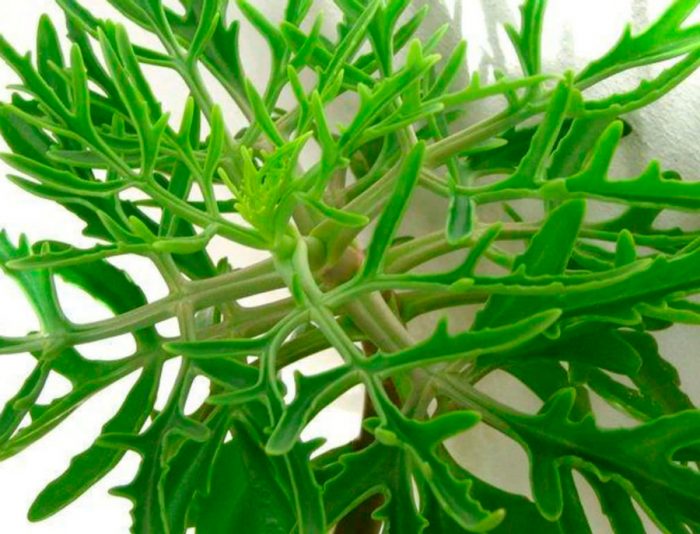
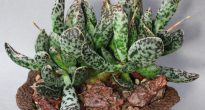
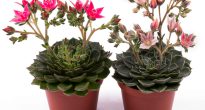

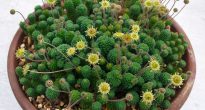
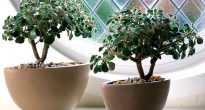

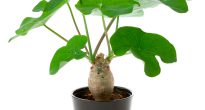
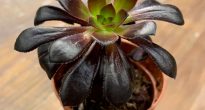
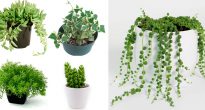

Interesting material, earlier I did not think that there are so many Kalanchoe species! I have the usual pinnate, and I use it as a remedy for a runny nose, instilling squeeze from the leaves into the nose, which causes a serial sneeze!) And drives out a runny nose, making breathing easier.
Help me please! I had a Kalanchoe Bloosfelda bought a couple of days ago yet. One had a respiratory root on the trunk the next day it dried up. And the next day a new one began to grow. As I know, it is undesirable to spray them, I thought maybe the past mistress sprayed them and the respiratory root grew out of him (they usually grow from plants in often flooded areas so that the plant can breathe). I just wiped it off.
Thank you for the information, everything is very easy to understand. And the video is so generally - thank you, Zhenya!
THANK YOU for such information about Kolonchoe!
Today I bought (from Grandmother on the Street) in a Flower Pot - 2 Small Sprouts of Colonchoe.
Flower Land Available.
Maybe Later - I will transplant ..
Thanks for the information about Kalanchoe! 👏👍🙏🌿🌹🌹🌹